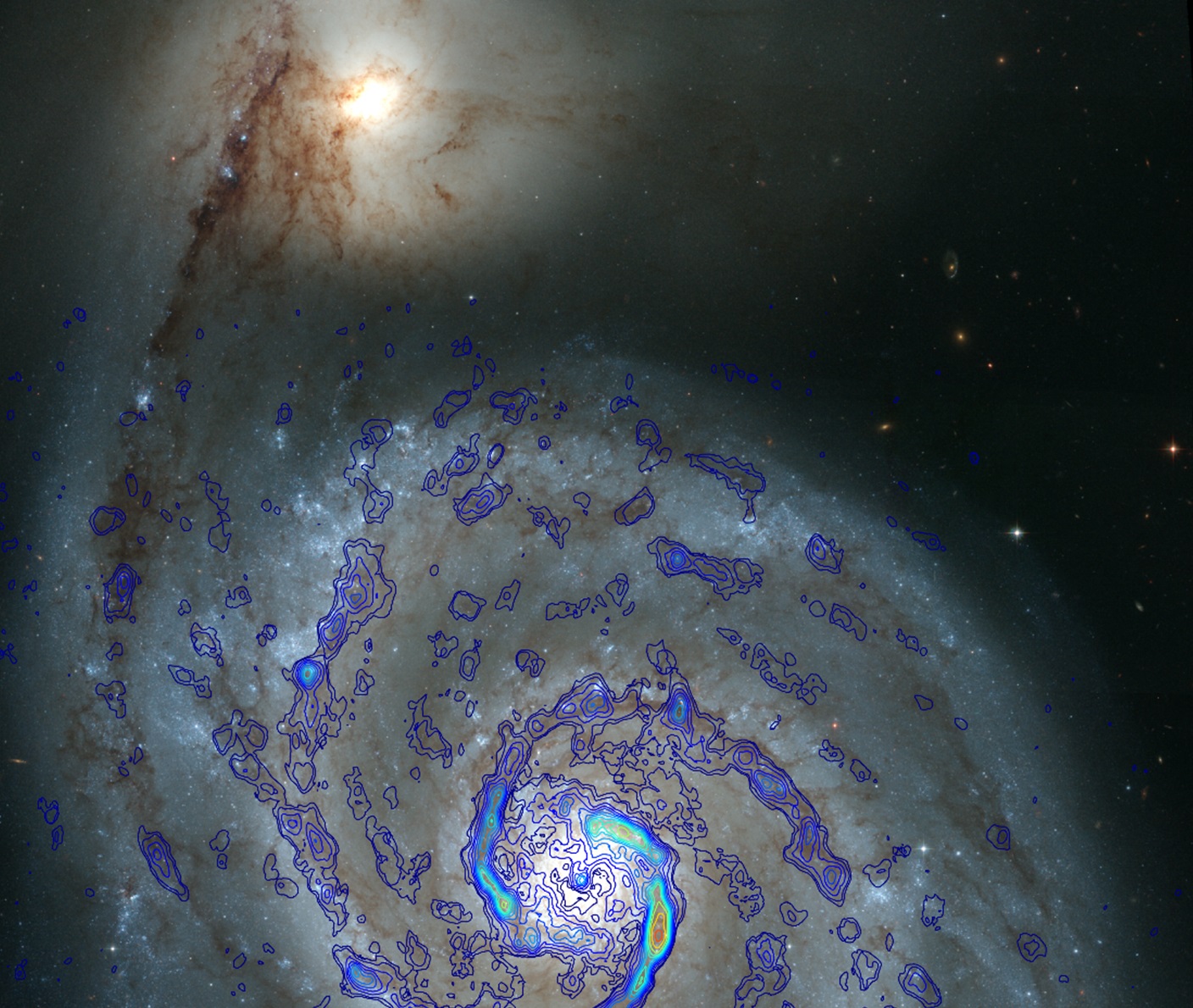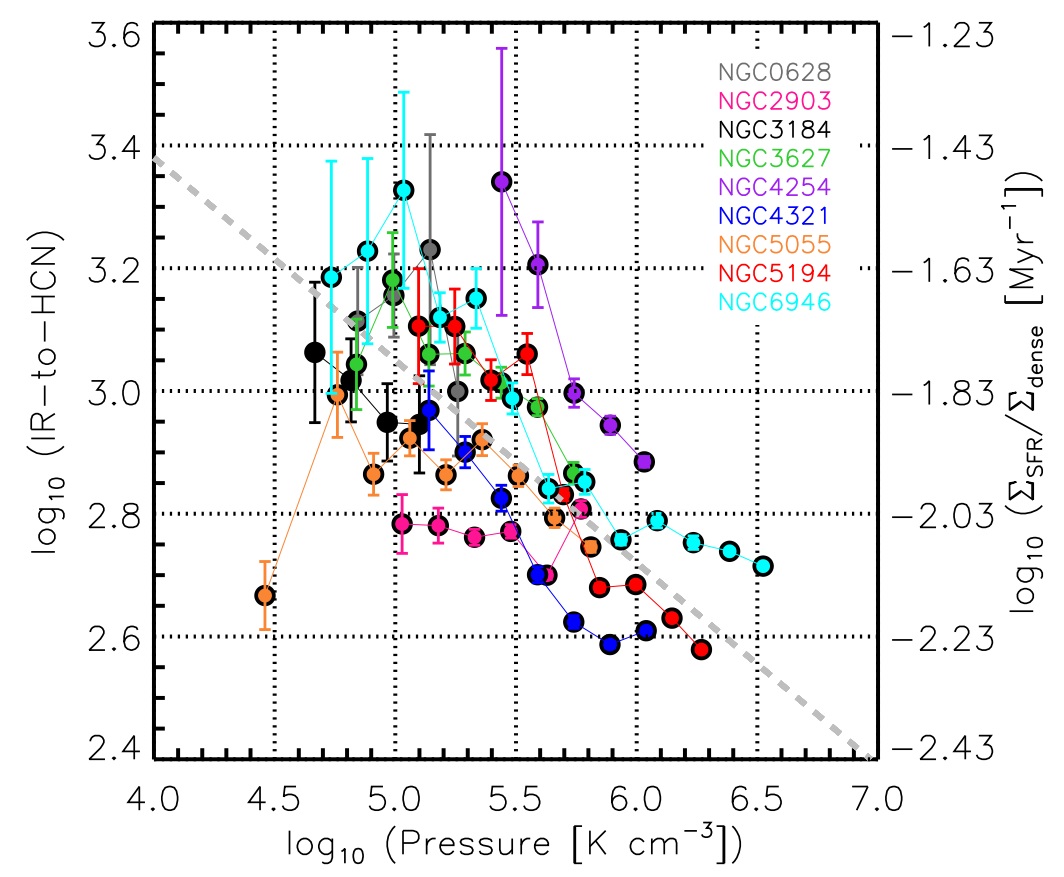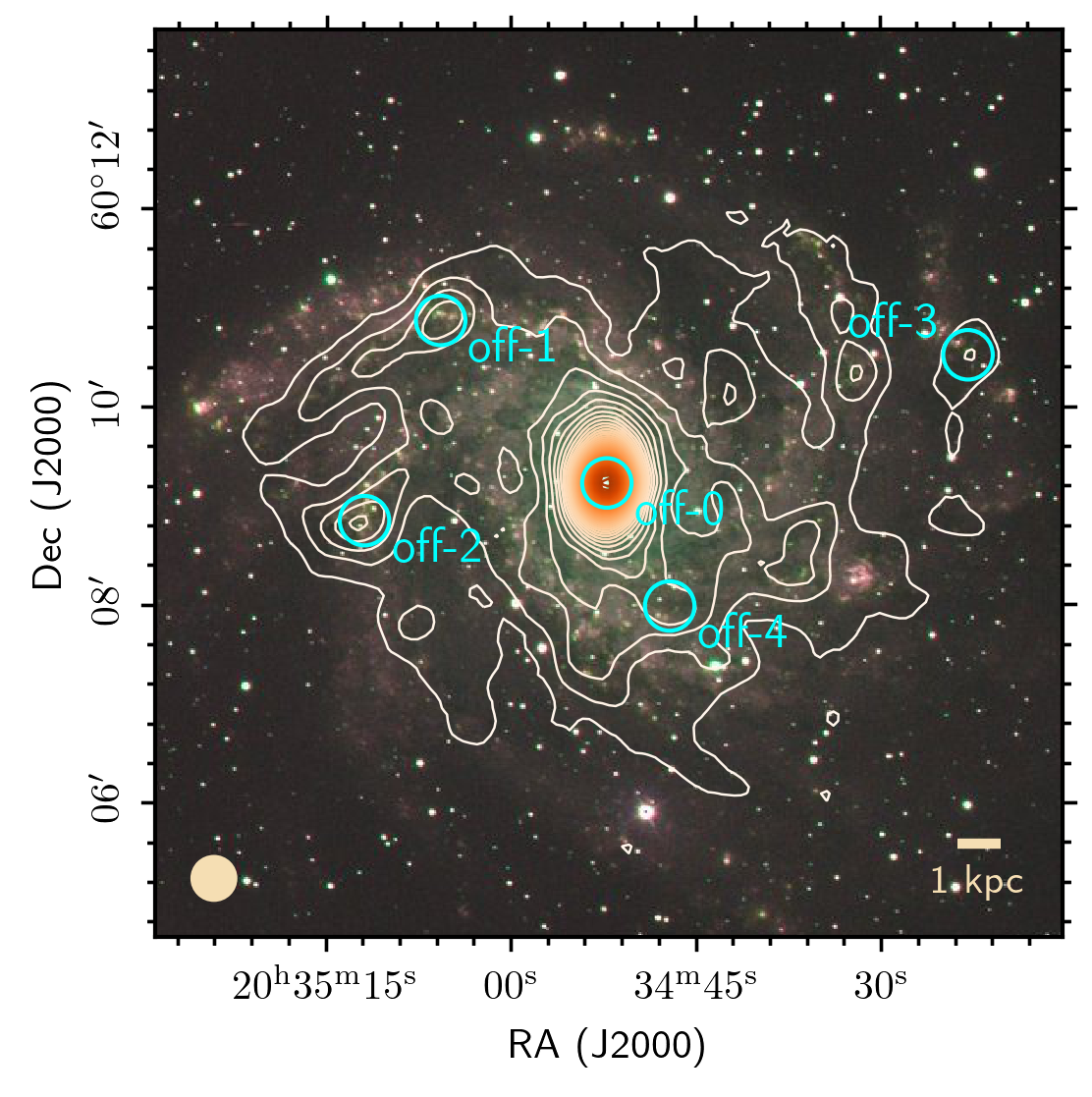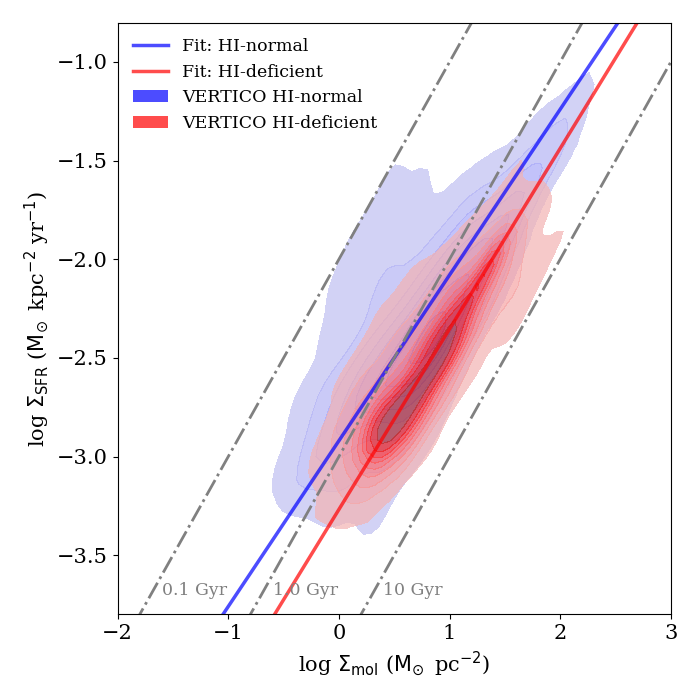Dense gas in nearby galaxies
Density plays a key role in any star formation theories because it directly governs the free-fall time in molecular clouds. Estimating gas density across galaxies is therefore crucial. As the lead observer of the IRAM-30m Large Program EMPIRE, I obtained exceptional data of dense gas tracers across entire disks of 9 nearby spiral galaxies. By combining these data with a suite of multiwavelength observations, I found evidence for a variable star formation efficiency of the dense gas, which anti-correlates with increasing hydrostatic pressure. Thus, although dense gas appears abundant the central regions of many spiral galaxies, this gas appears relatively inefficient at forming stars.




